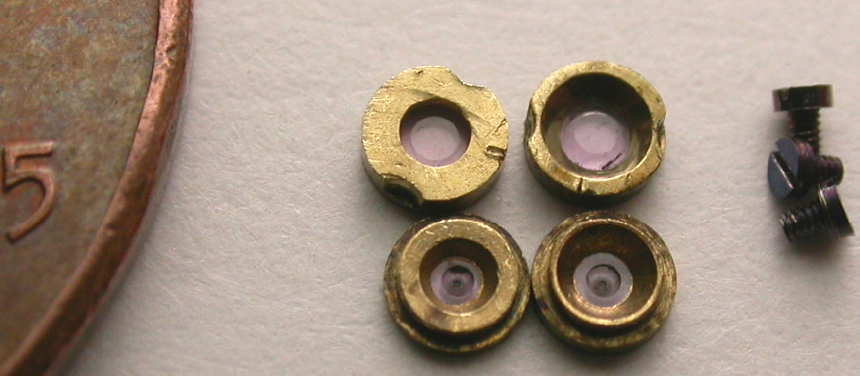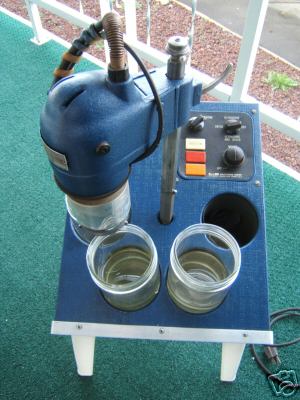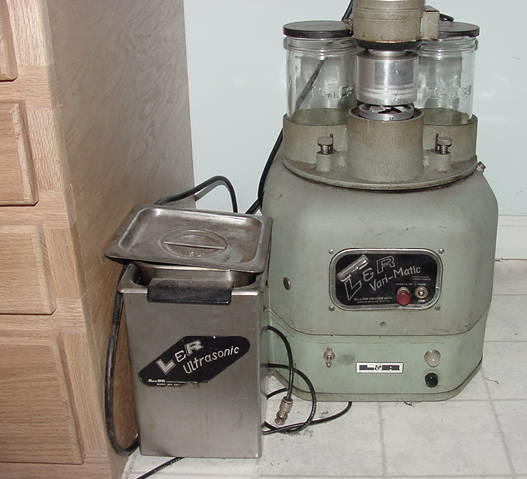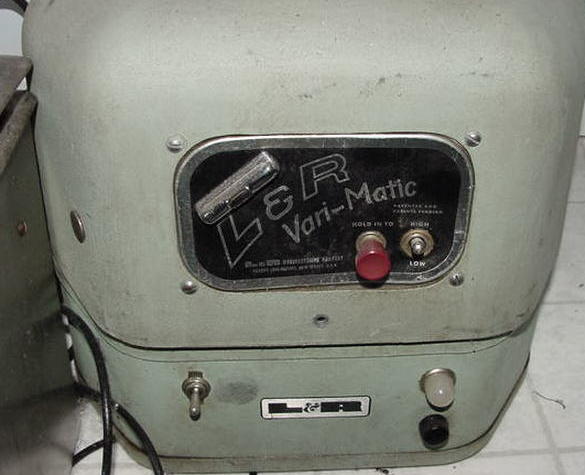
| WWT Shows | CLICK TO: Join and Support Internet Horology Club 185™ | IHC185™ Forums |

|
• Check Out Our... • • TWO Book Offer! • |
Welcome Aboard IHC185™  Internet Horology Club 185
Internet Horology Club 185  IHC185™ Discussion Site Main Page
IHC185™ Discussion Site Main Page  Technical, Shop Talk and Internet Links
Technical, Shop Talk and Internet Links  Watch Repair Questions and Answers
Watch Repair Questions and Answers  What do you do with the balance assembly during cleaning/oiling?
What do you do with the balance assembly during cleaning/oiling?
 Internet Horology Club 185
Internet Horology Club 185  IHC185™ Discussion Site Main Page
IHC185™ Discussion Site Main Page  Technical, Shop Talk and Internet Links
Technical, Shop Talk and Internet Links  Watch Repair Questions and Answers
Watch Repair Questions and Answers  What do you do with the balance assembly during cleaning/oiling?
What do you do with the balance assembly during cleaning/oiling?Go  | New Topic  | Find-Or-Search  | Notify  | Tools  | Reply to Post  |  |
For all you experienced watchmakers/repairers, here is a question: Assuming you're going to clean and oil a pocket watch, and assuming that the watch has no mechanical difficulties and it runs well and it is in beat, what do you do to the balance bridge and balance assembly during such an operation? Do you routinely separate the balance assembly from the bridge? Do you further remove the hairspring from the balance staff? Do you disassemble the regulator? Do you treat a "customer's" watch differently in this regard than you would one of your own, from your collection? Thanks in advance. Pete Belmonte Ofallon, IL | |||
|
Peter, That is a good question, I also would like to hear the comments..- | ||||
|
The only proper way to clean and oil a watch is to completely disassemble the movement. This includes removing the balance from the bridge; removing cap jewels from balance bridge. removing the regulator parts. Cleaning all parts including balance. Doug Sinclair has chronicled the process of disassembly and cleaning in his column of the Bulletin (See August 2004 issue). Every watchmaker (hobbiest included) should strive for his perfection. Even if the watch is in good running condition, I also remove the hairspring from the balance and check the balance for poise after the cleaning. The hairspring can then be cleaned (I use "one-dip") and demagnitized while separated from the balance. While this might not be essential for every watch. I have found it helpful in most cases. If a balance turns up unpoised, it can be a symptom of slightly bent pivots or a loosened balance screw that should be remedied before the watch is reassembled. As to treating watches differently if they are my own or someone elses... Regardless of owner they should be treated the same way... correct cleaning oiling and adjusting can only be done one way...Completely. There are no acceptable shortcuts. | ||||
|
For a great resource on poising a balance, visit Wayne's Elgin site and download the complete Elgin tech manual on poising: Elgin- Poising a balance | ||||
|
When cleaning, I do NOT ordinarily take the balance jewels out. The ultrasound and solvent should be able to clean them IF and ONLY IF the plate can be positioned in the basket with the capped-jewels pointed downward. (This is not possible on high-jewel, full plate watches that have capped-jewels facing in both diretions. In those cases, the balance jewels have to be disassembled. I remove the balance wheel from the balance cock for cleaning. I also re-clean the hairspring with one-dip (after the 5 ultrasounds) as I think that the dura-lube rinse might leave enough residue to effect performance. I do not ordinarily poise or remove the hairspring during the initial re-assembly. When the watch is fully reassembled, it is timed in all positions. If it will not time, I run down a list of possible causes, beginning with the most common. If necessary, at that point, the balance may be entirely disassembled, staff pivots burnished (or replaced entirely), etc. If the hairspring is removed from the balance-wheel, it is an easy step to poise and check for true. So that is always done. I know Fried says to disassemble capped jewels and clean them by hand but Fried's advice pre-dated modern ultrasonic cleaners and solvents. | ||||
|
| IHC Life Member |
I use an ultrasonic and have always removed the cap jewels. Even after removal and put through the ultrasonic, they sometimes need to be finished with a piece of pegwood to remove all of the dirt. The ultrasonic is not a magic machine. The only way to get all of the dirt out is to disassemble the movement. Also, you need to remove the cap jewels to inspect for wear and to properly lubricate them. As Mike stated earlier, there are no short cuts. If you are a beginner, I would refrain from removing the hairspring during servicing unless absolutely necessary. You can easily damage both the balance wheel and the hairspring. | |||
|
Looks like we're gonna disagree on this one, John. IF I can place the plate so that the cap-jewels drain downward, I have had absolutely no trouble cleaning them, in ultrasound, without disassmbly. It may be tradition but, in practice, I've had no problems. This is not to say that I won't clean them by hand IF I am troubleshooting a watch that is being stubborn to time. I'd say that more than half the time, I don't even bother to time the watch, prior to cleaning, if there is obvious dirt in the movement or shellac on the jewels. Basically, I clean, oil, and reassemble prior to even looking at the timing. No sense messing with a dirty watch. (Just so I'm clear.... I have no argument with disassembly of the movement. A watch cannot be properly cleaned by a "one-dip! And.... I fully agree that there is no way that a cap jewel can ever be cleaned if there is a pivot stuck inside it!) | ||||
|
| IHC Life Member |
Peter, It's not tradition but what works best. How can you say that you've cleaned the jewel cavity properly without knowing what lies behind the cap jewel? How do you plan on oiling the cap jewels if you don't take them out? I like using an ultrasonic but they have their limitations. There are many jewelry stores today that actually ultrasonic the complete movement and then use a lubricating rinse. There are some parts that you don't even want to put in an ultrasonic. Older movements that use non-synthetic or natural jewels should never be put into an ultrasonic but instead cleaned by hand. Attached is a picture of a balance jewel set from a 6s Elgin. These jewels were cleaned in a good GemOro ultrasonic. If you look closely, there is dirt still present on the jewels that will have to be removed manually. As you look at this picture, please tell me how all of the dirt located inside the jewel cavity will make its way out through the hole jewel? What you will have, is both dirt and cleaning solution trapped in the cavity. Then when you try to put oil into the cavity, you will simply have a dirty, oily mess!  | |||
|
I base my beliefs on what has actually worked for me in practice. There may indeed be rare or old watches that have jewels or gilding that cannot be ultrasonically cleaned. But we're not talking about those scarce watches. And let's put to rest this idea that I am advocating a "one-dip" with or without ultrasound. My cleanings involve a full disassmbly of the watch except for taking apart the capped jewels (UNLESS they face in both directions, as in some high-jewel full-plates.) I simply do not know why you keep telling me that I have to disassemble the watch, when I have gone to some effort to say that I fully agree that the same is necessary. After disassembly, my watches get five full baths in ultra-sound... 3 in solvent and two in dura-lube rinse. And, as I've noted, I DO take apart balance jewels when they face in a different direction than other plate jewels. So, I'm hardly taking short-cuts or avoiding a procedure that is beyond my skill-level. Have you tried leaving the cap-jewels in place as long as you can place them facing downward? If/when you do, your results should be the same as mine. A perfectly cleaned watch without timing problems (at least due to dirty jewels). The fact is that watchmakers will always stick to what works for them. I have personally cleaned and oiled about 150 watches in the past two years and my techniques were learned from a master-watchmaker that has cleaned and oiled thousands. I am hardly about to change practices that have been taught to me and that work because of a mere theory. Many of our watches are arriving, for cleaning with cracked jewels. Many of these are not so far gone that they cannot be made to run and time. Every time, you remove these jewels, you are risking having them simply fall apart. Unless you are sitting on a basket of NOS balance jewels, the risk is simply not worth it. This is especially so because I can do a very adequate and proper clean and oil with the cap-jewels in place. | ||||
|
| IHC Life Member |
Peter, I believe the only thing we disagree on is whether a capped jewel assembly (hole & cap jewel) can be "properly" or "completely" cleaned and oiled without disassembly. I once thought there wasn't a need to remove the cap and hole jewels for cleaning and pegging if using an ultrasonic. However, after an ultrasonic cleaning, I pushed both the upper and lower balance jewels out just to see how effective the ultrasonic cleaning had been. I was surprised to see how much dirt and hardened oil remained. Under 20x magnification, it really looked bad. Unless enough capillary action occurs to fill the tiny cavity with cleaning solution, there will be no ultrasonic action to dislodge the dirt and old hardened oil. Also, during ultrasonic cleaning, does it really matter if the parts are placed in any certain position? Will microscopic debris overcome the powerful ultrasonic agitation in the tank to fall (drain) through a tiny jewel hole? What keeps the suspended dirt and debris from entering back into the hole jewel? Maybe its better to place your parts up so that the dirt can float up and away from the part during ultrasonic action. Find an old PW movement that is obviously in need of servicing and after using your cleaning process, push the cap and hole jewels out. Inspect them under at least 20x magnification and I'll bet you'll be surprised at what you find. Again, I refer everyone to the picture of the 6s jewels. These were already removed from the movement and cleaned in an unltrasonic. Cleaning solvent was in contact over the entire jewel and bezel surfaces during cleaning. However, tiny areas of dirt remained that had to be manually removed. I'm not recommending that anyone take a watch totally down to its individual parts for cleaning but I would recommend a thorough cleaning of the critical bearing surfaces such as the balance hole and cap jewels. This will help insure minimal wear of the pivots and better accuracy over a long period of time. | |||
|
I would have grave suspicions if I ever cracked a jewel during ultrasonic cleaning. I use the one with 5 baths in it. (3 solvent and 2 dura-lube rinses). I HAVE had problems with super-glued jewels coming loose in ultra-sound. I've had both pallet jewels and roller-jewels loosen or come out IF they had been super-glued in. I've been told, however, that this is because super-glue will not hold under heat. As you know the baskets get quite warm and we very aggressively dry the baskets after cleaning. Of course, super-glue is totally in appropriate for movement jewels, so I would have no intention of altering my procedures to accommodate it. Shellac IS proper and it's not that much harder to use than super-glue. I wonder if your pallet jewel had not already broken and had been joined with super-glue. Just a guess! As to looking at jewels under magnification, I am blessed to have access to a jeweler's microscope. It's about 30X, binocular and has a nice, lighted base. I use it to make my go/no-go decision on cracked jewels because I can see the hole so clearly and whether it has been damaged. At 30X, a speck of just looks like a bolder but I have not noticed any particular amount of uncleaned dirt or dried oil in jewels that have been cleaned in ultrasound. | ||||
|
| IHC Life Member |
Hi Peter, Do you mean L&R Duo-lube or is it really Dura-lube? I've never used this product before and was curious as to how it works. Does it lubricate the pivots and jewels or do you manually oil the pivots in conjunction with the lube rinse? Also, do you have a model number or picture of the ultrasonic you use? Sounds like a nice one. My ultrasonic is a single tank so I have to do my rinses manually in jars. | |||
|
When I first started watch repair, I was told by my instructor, " cleaning a watch without removing the cap jewels, is like taking a shower with your raincoat on". Peter, if you use Duo-Lube, do you still have to oil the watch pivots? | ||||
|
OK.... John and others.... We might have been on different wavelengths. I BELIEVE that we are using L&R Duralube (I don't order it). But... we use it entirely as a rinse and as a preservative, NOT in place of oil. The capped jewels are oiled before assembly and the hole jewels are oiled after the pivots are in them. The pivots seem to carry the minute amount of oil into the center of the jewel by capillary action. Right now, we are using the 3 Jar L&R, ultra-sonic cleaner. That is much different than the simple tanks (which we use to rinse cases that have been buffed... but let's not go THERE right now). The L&R's are neat because each bath employs both ultrasound AND agitation. Between baths, the baskets get a very aggressive spin out by centrifugal force. As I mentioned, I use three solvent baths of 6 minutes each, followed by two duralube baths as rinses. The basket then is given a final, vigorous spin and then goes into the drier for 20 minutes. Perhaps the L&R’s agitation, combined with ultrasound is able to penetrate those capped jewels better than just an ultrasonic-dip alone. I used to use a much larger apparatus that did four baskets at a time. Then, we used four solvent baths and 2 duralube rinses. The procedure was about the same, however. I found that I did better, as watchmaker, if I could do movements, one at a time. Often, when I did four at a time, there was a substantial time-gap between disassembly and reassembly, so I didn’t have the advantage of recent memory. Rest assured that I wouldn’t consider (for a moment) trying to one-dip an assembled movement in either solvent or lube. Except for the disassembly and hand-cleaning of the cap-jewels, my procedures are strictly by the (Fried) book. I hesitated to bring this up,….. and perhaps it is a topic for another thread but…. we DON’T use an ammoniated solvent in cleaning movements. Ammonia will get the plates VERY, shiny but unless every trace of it is removed, it can etch the nickel and, over time, make the plates dull. I read that many folks here, do use an ammoniated cleaner and they are widely sold in watch-parts shops. Non-ammoniated cleaner is more expensive and (perhaps) a bit less effective in shining the plates but…. we believe that it is safer. There seems to be no way to avoid some degree of contamination of chemicals as the movement goes from bath to bath. That’s another reason why I prefer the L&R machine with its much smaller jars. When we encounter a nasty lube, like graphite, it is much less expensive to replace our solvent than when we were using over a gallon to clean 4 movements at a time. | ||||
|
| IHC Life Member |
Thanks Peter. For those interested, here is a link to the L&R line of cleaning solutions. | |||
|
I'll be in the shop tomorrow and I'll check to see exactly what we are using.... and report back. | ||||
|
| IHC Life Member |
Peter, is this machine similar to the one you are using? It seems to combine both the older and newer technologies. If anyone is interested, it's on eBay.  | |||
|
That looks much newer than the one I'm using. Ours doesn't have the push-buttons and it has larger jars. In fact, I don't think ours is solid state... it might have tubes. I'll check tomorrow. | ||||
|
| IHC Member 376 Watchmaker |
Here is a picture of a L&R ultrasonic cleaning machine that does a good job,,these have the ultarsonic feature and rotating baskets like the early 3 jars cleaners ,,the best of both worlds in one cleaner..These move from one jar to the other automatically and the time is adjustable.. I no longer use this one so it is taking up room in the corner of my workroom.i now use a newer version of the same cleaner.I can,t bring myself to selling it might have to use it aga  | |||
|
| IHC Member 376 Watchmaker |
2  | |||
|
| Powered by Social Strata |
| Your request is being processed... |
|
Welcome Aboard IHC185™  Internet Horology Club 185
Internet Horology Club 185  IHC185™ Discussion Site Main Page
IHC185™ Discussion Site Main Page  Technical, Shop Talk and Internet Links
Technical, Shop Talk and Internet Links  Watch Repair Questions and Answers
Watch Repair Questions and Answers  What do you do with the balance assembly during cleaning/oiling?
What do you do with the balance assembly during cleaning/oiling?
 Internet Horology Club 185
Internet Horology Club 185  IHC185™ Discussion Site Main Page
IHC185™ Discussion Site Main Page  Technical, Shop Talk and Internet Links
Technical, Shop Talk and Internet Links  Watch Repair Questions and Answers
Watch Repair Questions and Answers  What do you do with the balance assembly during cleaning/oiling?
What do you do with the balance assembly during cleaning/oiling?©2002-2025 Internet Horology Club 185™ - Lindell V. Riddle President - All Rights Reserved Worldwide

